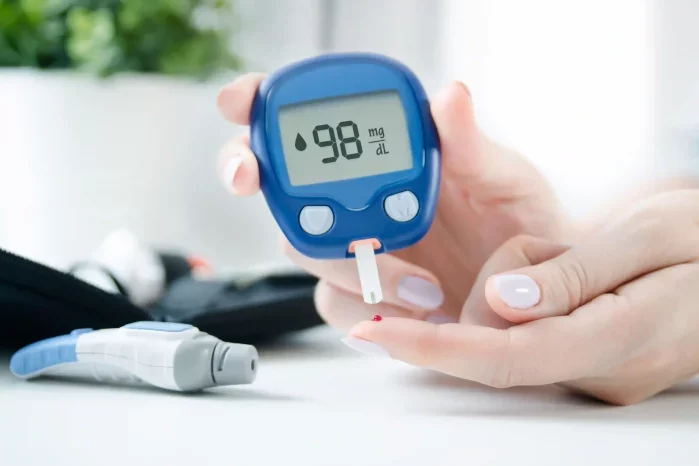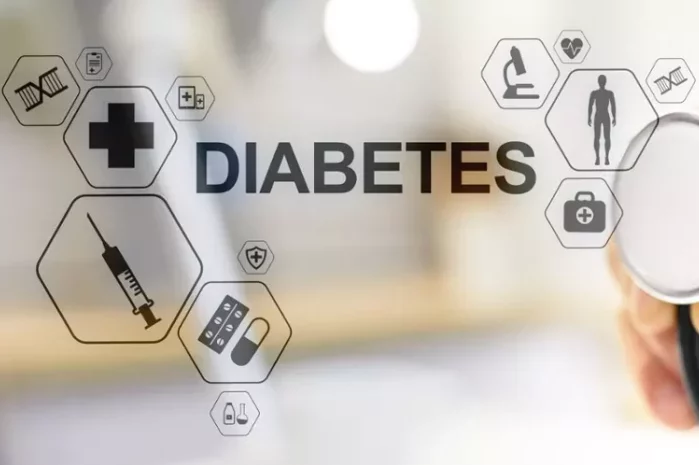Insulin resistance is a metabolic condition where the body’s cells become less responsive to the hormone insulin, leading to elevated blood sugar levels and often progressing to type 2 diabetes if left unmanaged. One common concern among individuals with insulin resistance is whether this condition makes it difficult to lose weight. This article explores the relationship between insulin resistance and weight loss, detailing the mechanisms involved, the challenges faced, and strategies to overcome these challenges for effective weight management.
Understanding Insulin Resistance
Insulin is a hormone produced by the pancreas that plays a critical role in regulating blood sugar levels. It facilitates the uptake of glucose from the bloodstream into cells, where it is used for energy or stored for future use. In individuals with insulin resistance, the cells in muscles, fat, and the liver do not respond well to insulin, causing the pancreas to produce more insulin to help glucose enter the cells.
When the cells become resistant to insulin, the following occurs:
Increased Insulin Production: To compensate for the reduced effectiveness, the pancreas secretes more insulin.
Elevated Blood Sugar Levels: Despite higher insulin levels, glucose remains in the bloodstream, leading to hyperglycemia.
Increased Fat Storage: High insulin levels promote fat storage, particularly in the abdominal area, contributing to weight gain and obesity.
Mechanisms Linking Insulin Resistance and Weight Gain
Insulin resistance and weight gain are closely interconnected, creating a vicious cycle that can be challenging to break. The mechanisms include:
Hyperinsulinemia: Elevated insulin levels promote the storage of glucose as fat rather than using it for energy. This can lead to an increase in fat mass, particularly in the abdominal region.
Impaired Fat Metabolism: Insulin resistance interferes with the body’s ability to break down fat for energy, leading to fat accumulation.
Increased Appetite: Insulin resistance can disrupt hormonal signals that regulate hunger and satiety, such as leptin and ghrelin, leading to increased appetite and overeating.
Inflammation: Insulin resistance is often associated with low-grade chronic inflammation, which can further exacerbate weight gain and make it harder to lose weight.
Challenges of Weight Loss with Insulin Resistance
Losing weight with insulin resistance can be particularly challenging due to several physiological and metabolic factors:
Difficulty in Mobilizing Fat: Insulin inhibits lipolysis, the process by which fat is broken down for energy. High insulin levels make it difficult for the body to access stored fat, hindering weight loss efforts.
Altered Energy Expenditure: Insulin resistance can affect basal metabolic rate (BMR), leading to reduced energy expenditure. This means that individuals may burn fewer calories at rest, making weight loss slower and more difficult.
Cravings and Hunger: Insulin resistance often leads to increased cravings for high-carbohydrate foods and a higher overall appetite, making it challenging to adhere to a calorie-controlled diet.
Reduced Muscle Mass: Insulin resistance can lead to the loss of muscle mass, which is metabolically active tissue. Lower muscle mass can reduce the number of calories burned, further complicating weight loss efforts.
Strategies for Managing Weight with Insulin Resistance
Despite the challenges, weight loss is achievable for individuals with insulin resistance through a combination of dietary changes, physical activity, and lifestyle modifications. Here are some effective strategies:
Dietary Changes
Low-Carbohydrate Diet: Reducing carbohydrate intake can help lower insulin levels and improve insulin sensitivity. Diets such as the ketogenic diet, which emphasize high fat and low carbohydrate intake, have shown promise in managing insulin resistance and promoting weight loss.
High-Fiber Diet: Consuming a diet rich in fiber can help regulate blood sugar levels and improve insulin sensitivity. Foods high in fiber include vegetables, fruits, whole grains, and legumes.
Balanced Macronutrients: Ensuring a balance of macronutrients—carbohydrates, proteins, and fats—can help stabilize blood sugar levels and prevent insulin spikes. Including healthy fats and lean proteins in meals can promote satiety and reduce cravings.
Glycemic Index Awareness: Choosing foods with a low glycemic index (GI) can prevent rapid spikes in blood sugar and insulin levels. Low-GI foods include non-starchy vegetables, some fruits, legumes, and whole grains.
Portion Control: Monitoring portion sizes and overall caloric intake is crucial for weight loss. Eating smaller, more frequent meals can help maintain stable blood sugar levels and prevent overeating.
Physical Activity
Aerobic Exercise: Regular aerobic exercise, such as walking, running, swimming, or cycling, can improve insulin sensitivity and aid in weight loss. Aim for at least 150 minutes of moderate-intensity aerobic exercise per week.
Resistance Training: Strength training exercises help build muscle mass, which increases metabolic rate and improves insulin sensitivity. Incorporate resistance training exercises, such as weightlifting, bodyweight exercises, or resistance band workouts, at least two to three times per week.
High-Intensity Interval Training (HIIT): HIIT involves short bursts of intense exercise followed by rest or low-intensity exercise. This type of training has been shown to improve insulin sensitivity and promote fat loss.
Lifestyle Modifications
Sleep: Adequate sleep is essential for regulating hormones that affect hunger and metabolism. Aim for 7-9 hours of quality sleep per night to support weight loss efforts.
Stress Management: Chronic stress can elevate cortisol levels, which can contribute to insulin resistance and weight gain. Incorporating stress management techniques, such as meditation, yoga, deep breathing exercises, or mindfulness, can help manage stress and improve overall well-being.
Regular Monitoring: Keeping track of blood sugar levels, dietary intake, and physical activity can help individuals with insulin resistance stay on track with their weight loss goals. Regular monitoring allows for adjustments and provides motivation.
Medical Interventions
In some cases, medical interventions may be necessary to manage insulin resistance and support weight loss:
Medications: Certain medications, such as metformin, can improve insulin sensitivity and aid in weight loss. Consult a healthcare provider to determine if medication is appropriate.
Bariatric Surgery: For individuals with severe obesity and insulin resistance, bariatric surgery may be an option. Surgical procedures, such as gastric bypass or sleeve gastrectomy, can lead to significant weight loss and improve insulin sensitivity.
Hormonal Treatments: In some cases, hormone therapy may be recommended to address imbalances that contribute to insulin resistance and weight gain.
Success Stories and Case Studies
Understanding the real-world application of these strategies can provide motivation and insight into effective management of insulin resistance and weight loss. Here are a few success stories and case studies:
Case Study 1: A 45-year-old woman with insulin resistance and a BMI of 32. Through a combination of a low-carbohydrate diet, regular aerobic exercise, and resistance training, she successfully lost 20 pounds over six months. Her insulin sensitivity improved, and she experienced better blood sugar control.
Case Study 2: A 38-year-old man with insulin resistance and a BMI of 35. By adopting a ketogenic diet and incorporating HIIT workouts into his routine, he lost 30 pounds in five months. His fasting insulin levels decreased, and he reported reduced cravings and improved energy levels.
Success Story 1: A 50-year-old woman with a history of gestational diabetes and insulin resistance. She joined a support group and worked with a nutritionist to develop a balanced meal plan and exercise regimen. Over a year, she lost 40 pounds and significantly improved her insulin sensitivity, allowing her to reduce her medication dosage.
The Role of Support and Community
Having a support system can make a significant difference in managing insulin resistance and achieving weight loss goals. Support groups, both online and in-person, can provide encouragement, accountability, and shared experiences. Working with healthcare professionals, such as dietitians, personal trainers, and endocrinologists, can also offer personalized guidance and support.
Future Research and Developments
Ongoing research continues to explore new treatments and strategies for managing insulin resistance and promoting weight loss. Advances in medical technology, such as continuous glucose monitors (CGMs), provide real-time feedback on blood sugar levels and can help individuals make informed decisions about their diet and activity. Additionally, research into the gut microbiome and its role in insulin resistance may lead to innovative approaches for managing this condition.
See also: What Medication to Take for Insulin Resistance
Conclusion
Insulin resistance presents significant challenges to weight loss, but with the right strategies and support, it is possible to achieve and maintain a healthy weight. Understanding the mechanisms behind insulin resistance and implementing dietary changes, regular physical activity, and lifestyle modifications can improve insulin sensitivity and promote weight loss. Medical interventions and ongoing research offer additional tools and hope for those struggling with this condition. By addressing insulin resistance holistically, individuals can enhance their overall health and well-being, reducing the risk of developing type 2 diabetes and other related complications.
Related topics:
Does High Cortisol Cause Insulin Resistance?

























